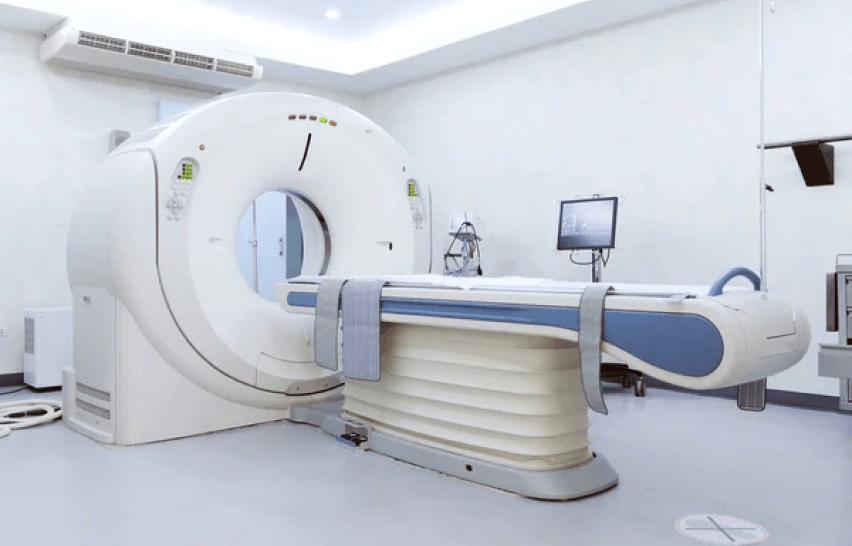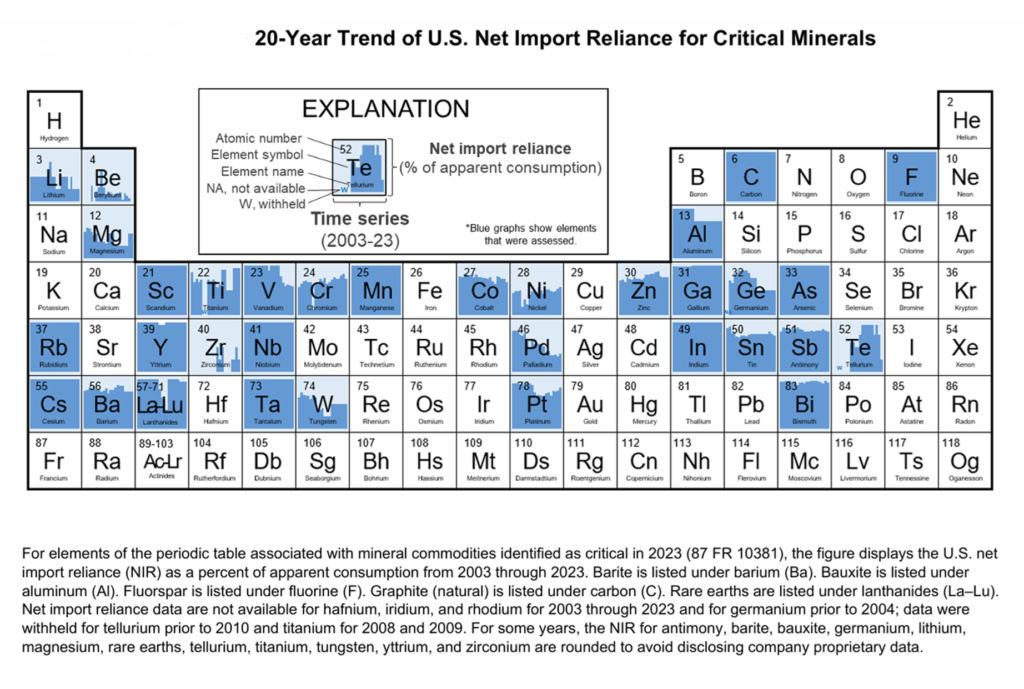TECHNOLOGY
RARE EARTH ELEMENT-An Introduction
Rare earth minerals can be hosted by several different geological associations such as primary (hard rock), supergene (Ionic Adsorption Clay in Saprolite) and sedimentary (Alluvium). In alluvial and hard-rock (granites) rare earth metals can be contained in rare earth phosphate minerals, such as monazite ([Ce, La, Y, Th]PO4) and xenotime (YPO4).
Charley Creek and potential hard rock prospects below the alluvial and laterites are examples of this. Recovery of rare earth metals from these minerals requires intense heat (cracking) and chemicals to leach the rare earth complexes into solution for further recovery.
Whereas Ion Adsorption Clay (‘IAC’) hosted rare earth projects, such as, Poços and Coda projects, the rare earth elements are ionically bonded with clay minerals. Ionic chemical bonds can be generally broken at ambient or low temperatures using commonly found commercial salts.
The term ‘Rare Earths Elements’ (REE) refers to a group of 15 chemical elements, with similar properties and with atomic numbers ranging from 57-71. REEs are also termed ‘lanthanides’, deriving from the transition element Lanthanum. Yttrium is commonly included with the REE elements because it tends to occur in association with them due to its similar chemical properties.
LREE, which include elements such as lanthanum, cerium, praseodymium, neodymium, and samarium, generally have lower atomic numbers and are more abundant in the Earth’s crust. HREE, on the other hand, have higher atomic numbers and include elements like gadolinium, terbium, dysprosium, erbium, ytterbium, and lutetium. These elements are less abundant and more valuable due to their specialized applications in high-tech industries, such as the production of phosphors, lasers, and powerful magnets for electric vehicles and wind turbines. MREE, or Middle Rare Earth Elements, occupy an intermediate position between LREE and HREE and include elements like europium and gadolinium.
Click on an element to find out more
Scandium
Scandium used to produce alloys with long-life as electrodes for hydrogen electrolysers and fuel cells. Can be used in aluminium alloys to increase strength, much like titanium, increase the operating strength of alloys at higher temperatures and provide high corrosion resistance.
Yttrium
Yttrium is often used as an additive in alloys. It increases the strength of aluminium and magnesium alloys. It is also used in the making of microwave filters for radar and has been used as a catalyst in ethene polymerisation. It can be used in camera lenses to make them heat and shock resistant. It is also used to make superconductors.
Lanthanum
Lanthanum has a multitude of uses. Commonly found in the anode of nickel hydride batteries. Extensively in carbon lighting applications, such as studio lighting and cinema projection. They increase the brightness and give an emission spectrum similar to sunlight. Lanthanum(III) oxide is used in making special optical glasses, as it improves the optical properties and alkali resistance of the glass.
Cerium
Cerium is primarily used as an industrial cutting agent and polish for glass, plastic and lenses. It can also be a a glass additive. It is used carbon lighting applications, such as studio lighting and cinema projection. They increase the brightness and give an emission spectrum similar to sunlight. Cerium is also used in flat-screen TVs, low-energy light bulbs and floodlights.
Praseodymium
Praseodymium salts are used to colour glasses, enamel and glazes an intense and unusually clean yellow. Praseodymium oxide is a component of didymium glass (along with neodymium). This glass is used in goggles used by welders and glassmakers, because it filters out the yellow light and infrared (heat) radiation.Praseodymium is used in a variety of alloys. The high-strength alloy it forms with magnesium is used in aircraft engines.Praseodymium salts are used to colour glasses, enamel and glazes an intense and unusually clean yellow. Praseodymium oxide is a component of didymium glass (along with neodymium). This glass is used in goggles used by welders and glassmakers, because it filters out the yellow light and infrared (heat) radiation.
Neodymium
Neodymium most common use is permanent magnets. As an additive it increases the strength of high performance. Neodymium-iron-boron (NdFeB) magnets. Also used in headlight glass.
Gadolinium
Scandium used to dope fuelcell electrolyte and improve conductivity. Improves strength of aluminium much like tiitanium.
Samarium oxide
Samarium oxide largest use of the element is its ferromagnetic alloy which produces low cost permanent magnets. Sm has specialised use in glass and ceramics.
Europium
Europium is used in the printing of euro banknotes. It glows red under UV light, and forgeries can be detected by the lack of this red glow.Low-energy light bulbs contain a little europium to give a more natural light, by balancing the blue (cold) light with a little red (warm) light. Europium is excellent at absorbing neutrons, making it valuable in control rods for nuclear reactors.Europium-doped plastic has been used as a laser material. It is also used in making thin super-conducting alloys.
Gadolinium
Gadolinium used in a diverse range of applications. Doping certain metal alloys improves workability, strength at tempature whilst reducing oxidation. It can be found in Reversible Solid Oxide Fuel Cells, magnets, electronic componentry.Terbium-activated gadolinium oxysulfide is frequently used as a scintillator for x-ray imaging.Gadolinium is commonly used as a neutron absorber.
Terbium
Terbium produces a green to yellow light. It is used in lights and LED/LCD applications. It has significant use in laser and optic fibre networks for signal amplification. Terbium is magno-restrictive and can be used to create coating on speakers and speaker surfaces.
Dysprosium
Dysprosium is often used in magnets to provide higher temperature stability. It has been used in nuclear control rods for neutron capture. Dysposium is used in Terfanol-D, a magnetostrictive metal that is used for mechanical actuation equipment,ie.. converting electrical energy to mechanical motion. It can be used in nuclear control rods. Dy is is used as a dopant in electronic circuits. Dy is also sensitive to ioning radiation. It has application as a radiation sensor. Dy is used as a catalyst and alloy doping agent to improve strength and corrosion resistance
Holmium
Holmium is the most magnetic metal, it is used to amplify magnetic fields. Holmium Stanate is used in nuclear control rods.
Erbium
Erbium is used a a glass dopant creating pink shades. Eriboum is alos used in lasers for skin restoration and beauty. Erbium can be found in alloys to reduce hardness and improve flexibility. Erbium is also used in dental lasers to produce a low penetrating wavelength.
Thulium
Thulium: utilized in components of high-temperature furnaces and as a crucial material in the aerospace industry for thermal shielding and other heat-resistant applications. Electronics and Optics: Leveraging its unique optical properties, Thulium (III) oxide is instrumental in the manufacturing of specialty glass and advanced ceramic materials1.
Lutetium
Lutetium tantalate has industrical applications as a catlyst in cracking, alkylation, hydrogenation and polymerisation, however is quite costly to produce in its purer forms. Lu can be used dopant creating glass of a high-refractive-index. Lu is used in positron emission tomography (PET) detectors. Lu has uses in LED light bulb
Critical Metals For the Future
Electric Cars
High performance rare earth magnets are used in small lightweight motors used in cooling fans, water pumps, wiper motors, steering motors, wheel steering motors. Neodymium and Praseodymium are used to give these magnets superior performance. Dyprosium is used for high temperture stabilisation. Very speciliased magnets may include Ho.

Critical Metals For the Future
Medical Technologies
Rare earth elements (REEs) are essential in modern medical technologies due to their unique properties. They enhance diagnostic imaging, such as MRI and X-ray systems, with gadolinium and lanthanum. In medical devices, elements like erbium, neodymium, and yttrium are crucial for lasers used in surgeries, while samarium and lutetium are key in cancer treatment. REEs also play a role in advanced drug delivery systems, fluorescent markers in biotechnology, and DNA sequencing, significantly improving healthcare effectiveness and efficiency.

Critical Metals For the Future
Wind Turbines
Rare earth elements (REEs) are vital in wind turbine technology due to their magnetic and conductive properties. Neodymium, praseodymium, and dysprosium are used to make powerful permanent magnets in turbine generators, which enhance efficiency and performance. These magnets allow for lighter, more compact, and more efficient turbines that can operate at lower wind speeds, increasing overall energy production. Additionally, REEs contribute to the durability and longevity of wind turbines, reducing maintenance costs and improving reliability. Their unique properties make REEs crucial for the advancement and sustainability of wind energy technology.

Critical Metals For the Future
Smartphones
Rare earth elements (REEs) are crucial in smartphone technology due to their unique properties. Neodymium, praseodymium, and dysprosium are used in powerful magnets for speakers and vibration units, enhancing sound quality and tactile feedback. Europium and terbium are used in the phone’s display to produce vibrant colors. Additionally, REEs like lanthanum are used in the glass polishing process to create scratch-resistant screens. These elements also improve battery efficiency and performance. Overall, REEs enable the compact design, high performance, and advanced features that make modern smartphones indispensable.

Critical Metals For the Future
Electric Cars
High performance rare earth magnets are used in small lightweight motors used in cooling fans, water pumps, wiper motors, steering motors, wheel steering motors. Neodymium and Praseodymium are used to give these magnets superior performance. Dyprosium is used for high temperture stabilisation. Very speciliased magnets may include Ho.

Critical Metals For the Future
Medical Technologies
Rare earth elements (REEs) are essential in modern medical technologies due to their unique properties. They enhance diagnostic imaging, such as MRI and X-ray systems, with gadolinium and lanthanum. In medical devices, elements like erbium, neodymium, and yttrium are crucial for lasers used in surgeries, while samarium and lutetium are key in cancer treatment. REEs also play a role in advanced drug delivery systems, fluorescent markers in biotechnology, and DNA sequencing, significantly improving healthcare effectiveness and efficiency.

Critical Metals For the Future
Wind Turbines
Rare earth elements (REEs) are vital in wind turbine technology due to their magnetic and conductive properties. Neodymium, praseodymium, and dysprosium are used to make powerful permanent magnets in turbine generators, which enhance efficiency and performance. These magnets allow for lighter, more compact, and more efficient turbines that can operate at lower wind speeds, increasing overall energy production. Additionally, REEs contribute to the durability and longevity of wind turbines, reducing maintenance costs and improving reliability. Their unique properties make REEs crucial for the advancement and sustainability of wind energy technology.

Critical Metals For the Future
Smartphones
Rare earth elements (REEs) are crucial in smartphone technology due to their unique properties. Neodymium, praseodymium, and dysprosium are used in powerful magnets for speakers and vibration units, enhancing sound quality and tactile feedback. Europium and terbium are used in the phone’s display to produce vibrant colors. Additionally, REEs like lanthanum are used in the glass polishing process to create scratch-resistant screens. These elements also improve battery efficiency and performance. Overall, REEs enable the compact design, high performance, and advanced features that make modern smartphones indispensable.

Critical Minerals and Strategic Mineral
According to US government, the Energy Act of 2020 defined critical minerals as those that are essential to the economic or national security of the United States; have a supply chain that is vulnerable to disruption; and serve an essential function in the manufacturing of a product, the absence of which would have significant consequences for the economic or national security of the US. The act further specified that critical minerals do not include fuel minerals; water, ice, or snow; or common varieties of sand, gravel, stone, pumice, cinders, and clay.
Mineral criticality is not static, but changes over time as supply and demand dynamics evolve, import reliance changes, and new technologies are developed.
Strategic minerals are commodities essential to national defense for which the supply during war is wholly, or in part, dependent upon sources outside the boundaries of the US. Because these resources would be difficult to obtain, strict measures controlling conservation and distribution are necessary.
Strategic minerals are commodities essential to national defense for which the supply during war is wholly, or in part, dependent upon sources outside the boundaries of the US. Because these resources would be difficult to obtain, strict measures controlling conservation and distribution are necessary.
US Critical Minerals List
On February 24, 2022, pursuant to section 7002 of the Energy Act of 2020 (Public Law 116–260) and using the definition of “critical mineral” and the criteria specified therein, the US Geological Survey (USGS) published the “2022 Final List of Critical Minerals” in the Federal Register (87 FR 10381). The 2022 list of critical minerals, which revised the U.S. critical minerals list (CML) published in 2018 (83 FR 23295), included 50 mineral commodities instead of 35 mineral commodities or mineral groups. The changes in the 2022 CML from the 2018 CML were the addition of nickel and zinc, listing out individual platinum-group metals and rare-earth elements, and the removal of helium, potash, rhenium, strontium, and uranium. The CML is to be updated at least every 3 years and revised as necessary consistent with available data

Rare Earth Elements as Critical Minerals
The principal economic sources of rare earths are the minerals bastnasite, monazite, and loparite and the lateritic ion-adsorption clays. The rare earths are a relatively abundant group of 17 elements composed of scandium, yttrium, and the lanthanides. The elements range in crustal abundance from cerium, the 25th most abundant element of the 78 common elements in the Earth’s crust at 60 parts per million, to thulium and lutetium, the least abundant rare-earth elements at about 0.5 part per million.
The elemental forms of rare earths are iron gray to silvery lustrous metals that are typically soft, malleable, and ductile and usually reactive, especially at elevated temperatures or when finely divided. The rare earths’ unique properties are used in a wide variety of applications.

US Department of Energy criticality matrix of 16 elements for 2015-2025, based on importance to clean energy and supply risk. Modified from US Department of Energy (2011).
Critical Minerals and Strategic Material
The Australian Government maintains two (2) lists of minerals that are important for Australia’s modern technologies, economies and national security:
- Critical Minerals
- Strategic Materials
The minerals on these lists support:
- our transition to net zero emissions
- advanced manufacturing
- defence technologies and capabilities
- broader strategic applications.
The government reviews the lists at least every three (3) years and may update them in response to global strategic, technological, economic and policy changes..
Strategic Materials
Strategic Materials are important for the global transition to net zero and broader strategic applications, specifically priority technologies as set out in the Critical Minerals Strategy, for which Australia has geological potential for resources in demand by our strategic international partners.
Strategic Mineral supply chains are not currently vulnerable enough to meet the criteria for the Critical Minerals List.
The government will continue supporting the extraction and processing of these minerals and monitoring their market developments.
Australia’s strategic materials are:
- aluminium
- copper
- phosphorus
- tin
- zinc
Lithium
Meeting our Energy Demands
- Lithium mining plays a pivotal role in meeting the increasing demand for rechargeable batteries, essential for electric vehicles and renewable energy storage solutions
- Major deposits are found in continents like South America, Australia, and China. Enova considers Minas Gerais Brazil most conducive for future mining lithium mining with geologically prospective areas, supportive community, transparent government and excellent infrastructure.
- Lithium exploration and mining are a key supply chain link to meet global policy demands for greener technologies and sustainable energy storage worldwide.
Enova’s Lithium Exploration and Mining
Enova Mining is setting its sights on lithium exploration and eventually looking forward to contributing significantly to the global supply chain of this crucial resource
Key lithium projects in our portfolio are East Salinas, Santo Antonio, Carai and Resplendor projects in Lithium Valley of Brazil. Enova Mining is in the process of employing state-of-the-art technologies to identify lithium targets, test and define the target and followed by detail exploration
This essential mineral is pivotal in powering electric vehicles and storing renewable energy, thus supporting the global transition towards cleaner transportation and sustainable energy solutions
Enova Mining’s commitment to environmental stewardship ensures that its lithium mining operations not only meet current global demand but also contribute positively to technological innovation and the advancement of sustainable development goals worldwide



